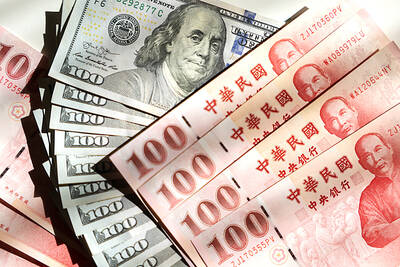Boeing Co has delivered layoff notices to more than 400 members of its professional aerospace labor union, part of thousands of cuts planned as the company struggles to recover from financial and regulatory trouble as well as an eight-week strike by its machinists’ union.
The pink slips went out last week to members of the Society of Professional Engineering Employees in Aerospace (SPEEA), the Seattle Times reported.
The workers would remain on the payroll through mid-January.

Photo: AFP
Boeing announced last month that it planned to cut 10 percent of its workforce, about 17,000 jobs, in the coming months.
Boeing chief executive officer Kelly Ortberg told employees the company must “reset its workforce levels to align with our financial reality.”
The SPEEA said the cuts had affected 438 members. The union’s local chapter has 17,000 Boeing employees who are largely based in Washington, with some in Oregon, California and Utah.
Of those 438 workers, 218 are members of SPEEA’s professional unit, which includes engineers and scientists.
The rest are members of the technical unit, which includes analysts, planners, technicians and skilled tradespeople.
Eligible employees would receive career transition services and subsidized health care benefits for up to three months.
Workers would also receive severance, typically about one week of pay for every year of service.
Boeing’s unionized machinists began returning to work earlier this month following the strike.
The strike strained Boeing’s finances.
However, Ortberg said on a conference call with analysts last month that it did not cause the layoffs, which he described as a result of overstaffing.
Boeing, based in Arlington, Virginia, has been in financial and regulatory trouble since a panel blew off the fuselage of an Alaska Airlines 737 MAX plane in January.
Production rates slowed to a crawl, and the US Federal Aviation Administration capped production of the 737 MAX at 38 planes per month, a threshold Boeing has yet to reach.

MARKET LEADERSHIP: Investors are flocking to Nvidia, drawn by the company’s long-term fundamntals, dominant position in the AI sector, and pricing and margin power Two years after Nvidia Corp made history by becoming the first chipmaker to achieve a US$1 trillion market capitalization, an even more remarkable milestone is within its grasp: becoming the first company to reach US$4 trillion. After the emergence of China’s DeepSeek (深度求索) sent the stock plunging earlier this year and stoked concerns that outlays on artificial intelligence (AI) infrastructure were set to slow, Nvidia shares have rallied back to a record. The company’s biggest customers remain full steam ahead on spending, much of which is flowing to its computing systems. Microsoft Corp, Meta Platforms Inc, Amazon.com Inc and Alphabet Inc are

Luxury fashion powerhouse Prada SpA has acknowledged the ancient Indian roots of its new sandal design after the debut of the open-toe footwear sparked a furor among Indian artisans and politicians thousands of miles from the catwalk in Italy. Images from Prada’s fashion show in Milan last weekend showed models wearing leather sandals with a braided design that resembled handmade Kolhapuri slippers with designs dating back to the 12th century. A wave of criticism in the media and from lawmakers followed over the Italian brand’s lack of public acknowledgement of the Indian sandal design, which is named after a city in the

The US overtaking China as Taiwan’s top export destination could boost industrial development and wage growth, given the US is a high-income economy, an economist said yesterday. However, Taiwan still needs to diversify its export markets due to the unpredictability of US President Donald Trump’s administration, said Chiou Jiunn-rong (邱俊榮), an economics professor at National Central University. Taiwan’s exports soared to a record US$51.74 billion last month, driven by strong demand for artificial intelligence (AI) products and continued orders, with information and communication technology (ICT) and audio/video products leading all sectors. The US reclaimed its position as Taiwan’s top export market, accounting for

INVESTOR RESILIENCE? An analyst said that despite near-term pressures, foreign investors tend to view NT dollar strength as a positive signal for valuation multiples Morgan Stanley has flagged a potential 10 percent revenue decline for Taiwan’s tech hardware sector this year, as a sharp appreciation of the New Taiwan dollar begins to dent the earnings power of major exporters. In what appears to be the first such warning from a major foreign brokerage, the US investment bank said the currency’s strength — fueled by foreign capital inflows and expectations of US interest rate cuts — is compressing profit margins for manufacturers with heavy exposure to US dollar-denominated revenues. The local currency has surged about 10 percent against the greenback over the past quarter and yesterday breached